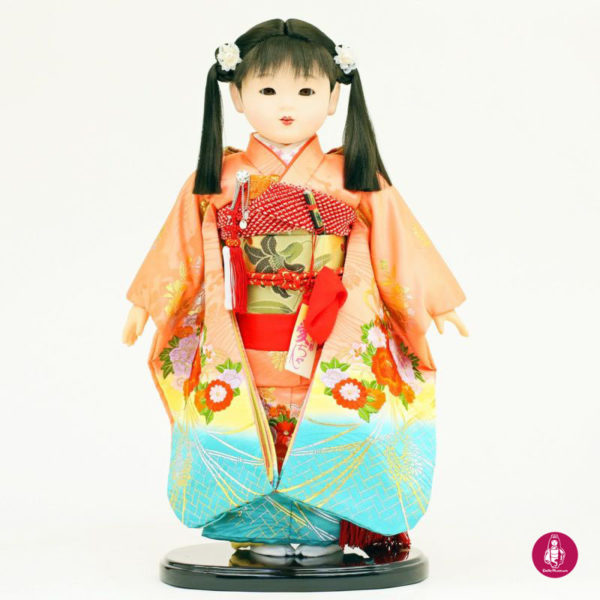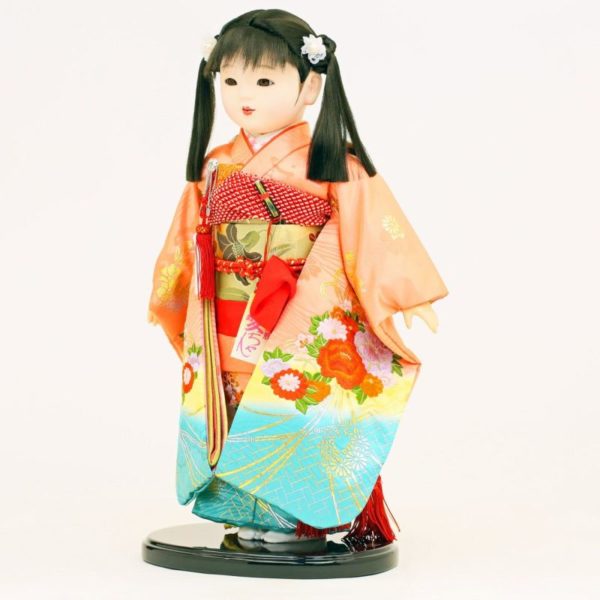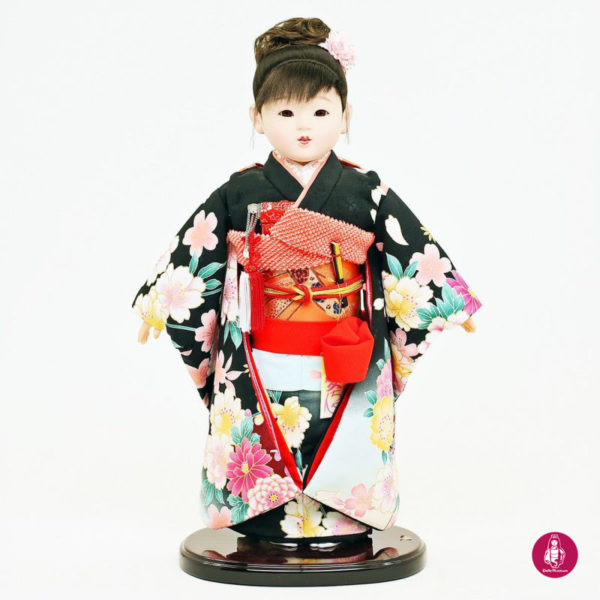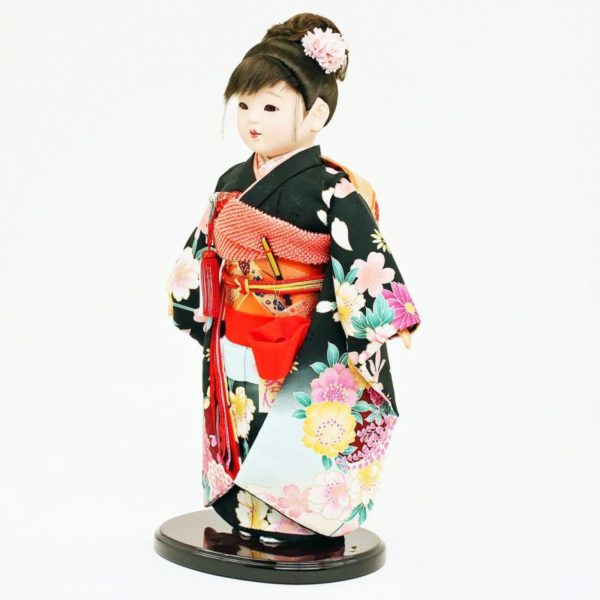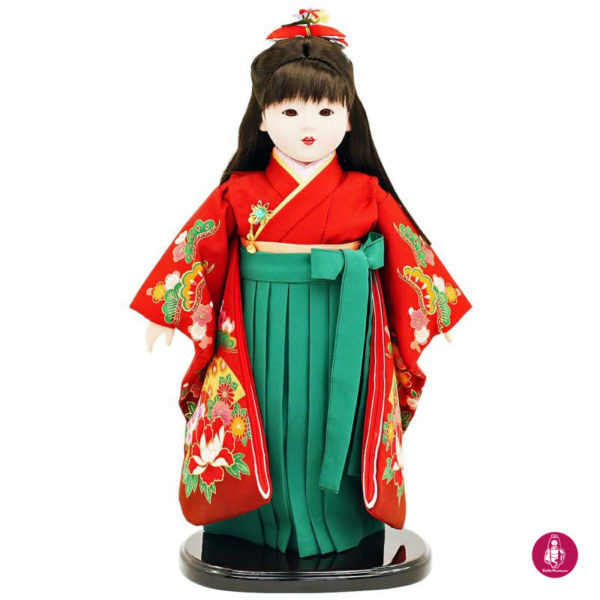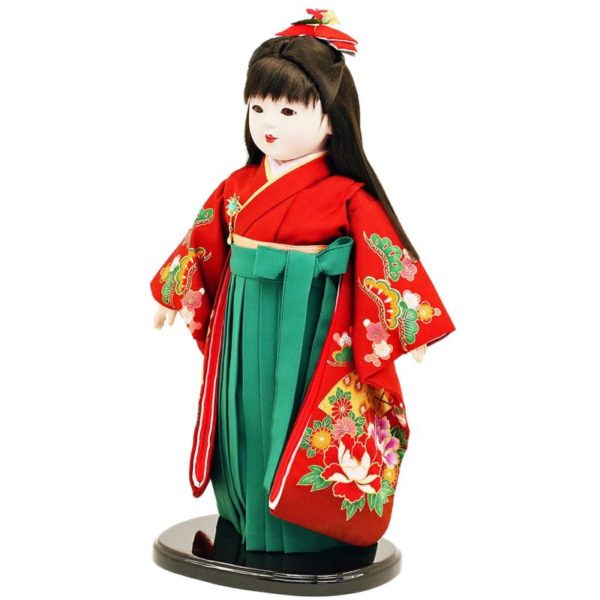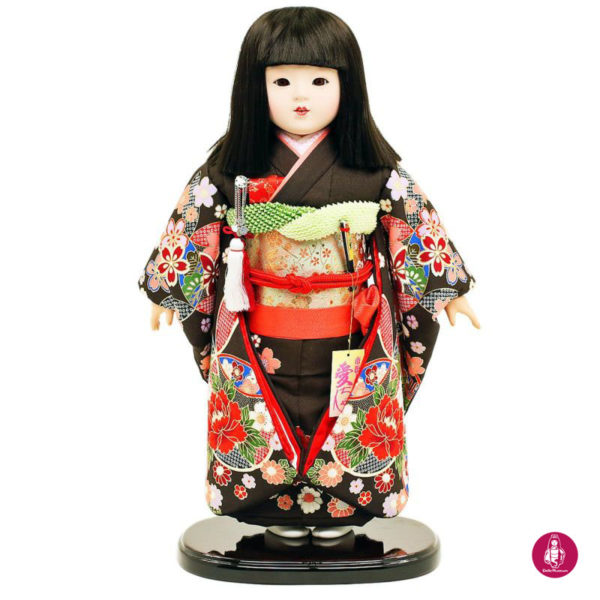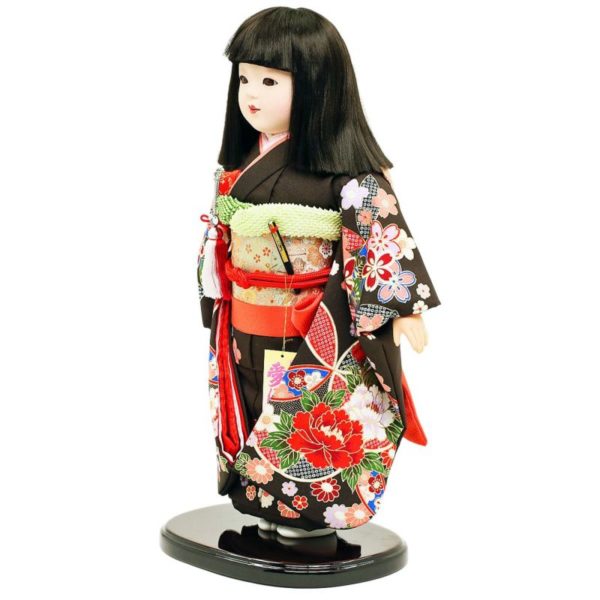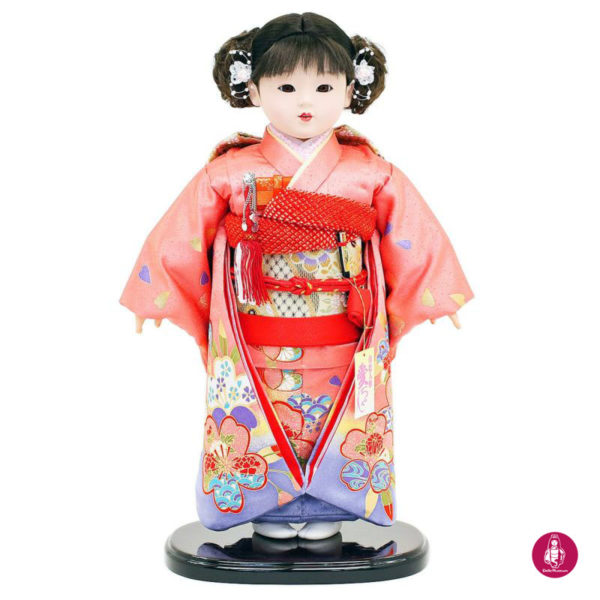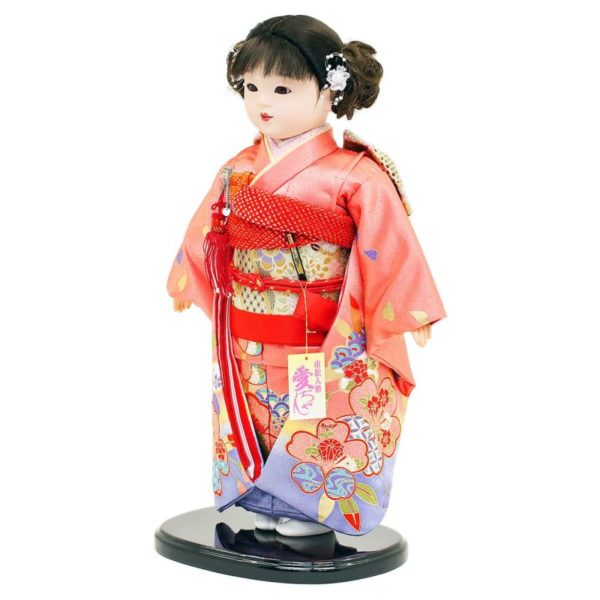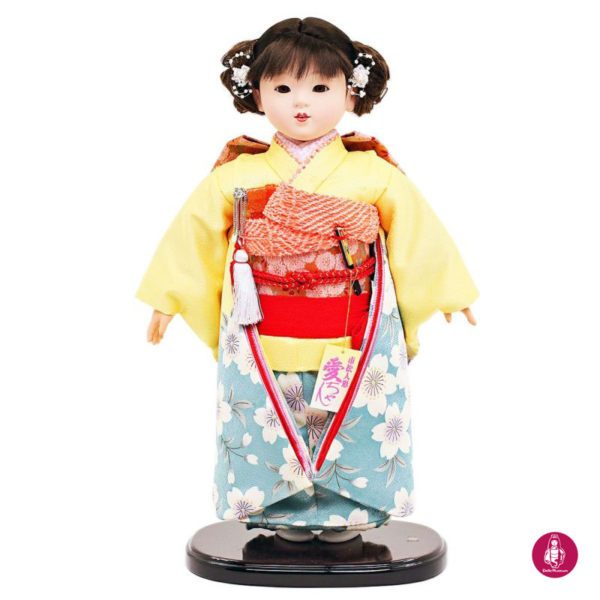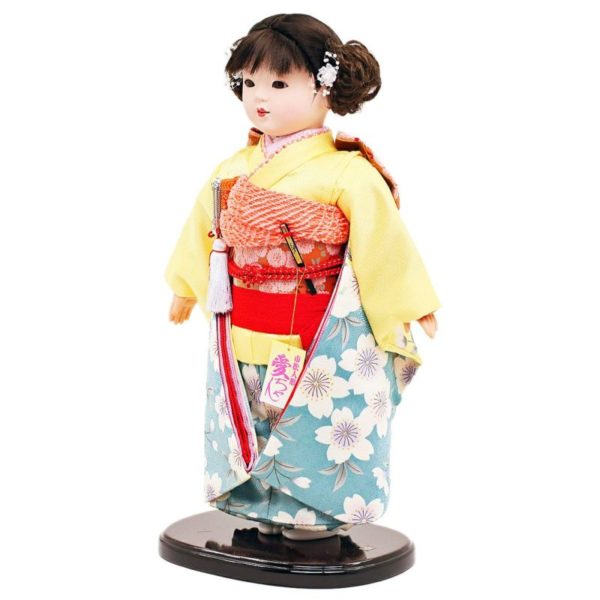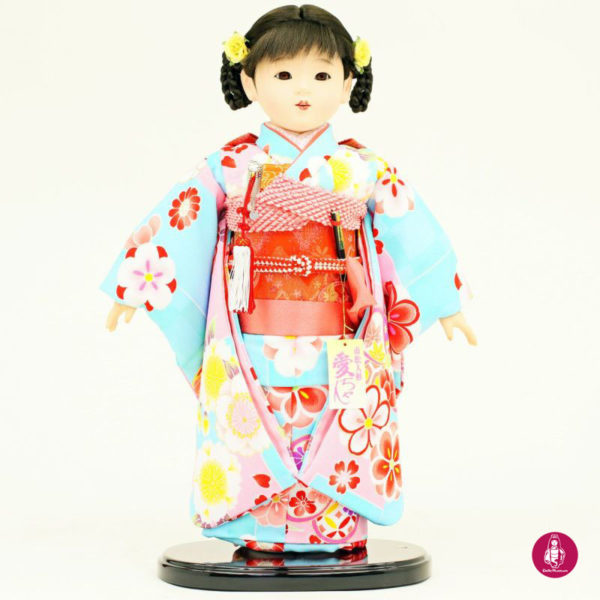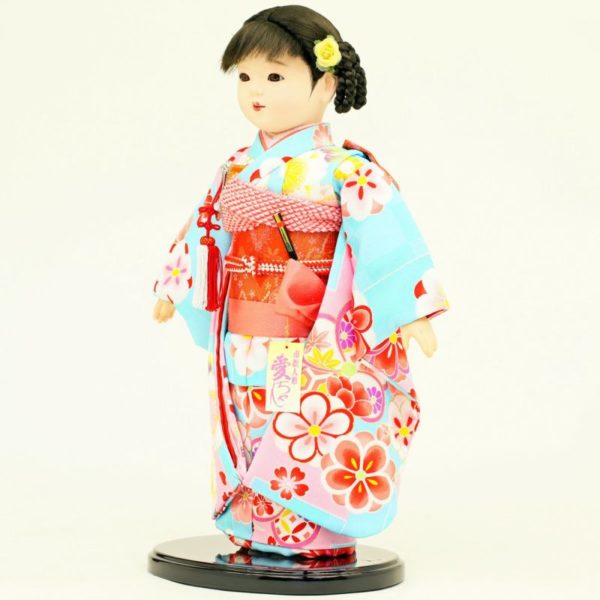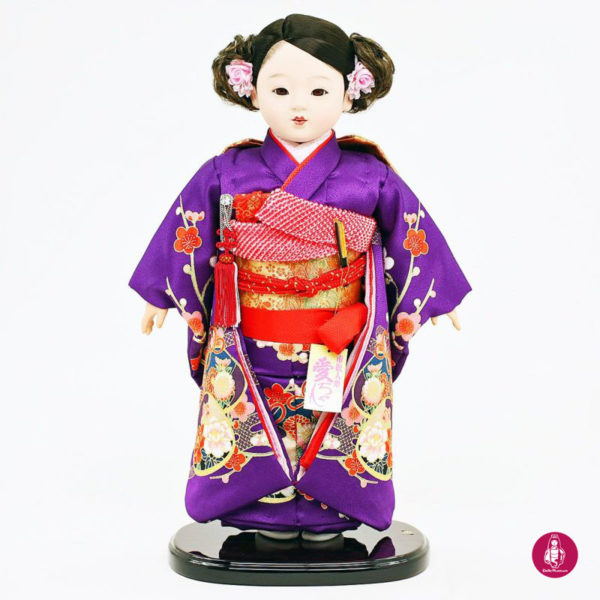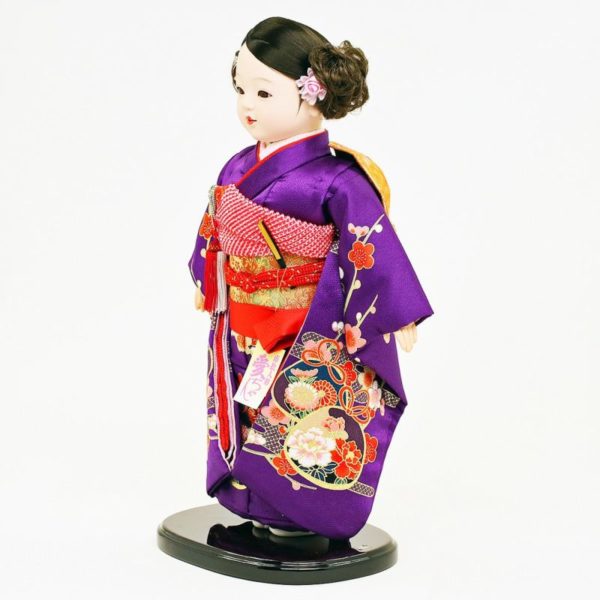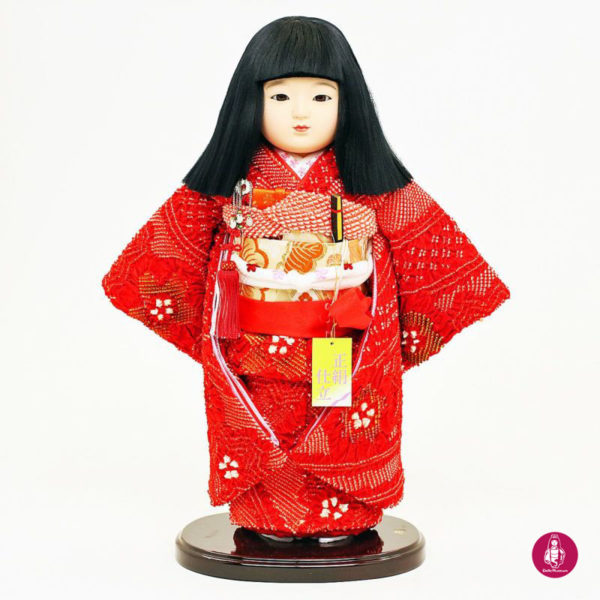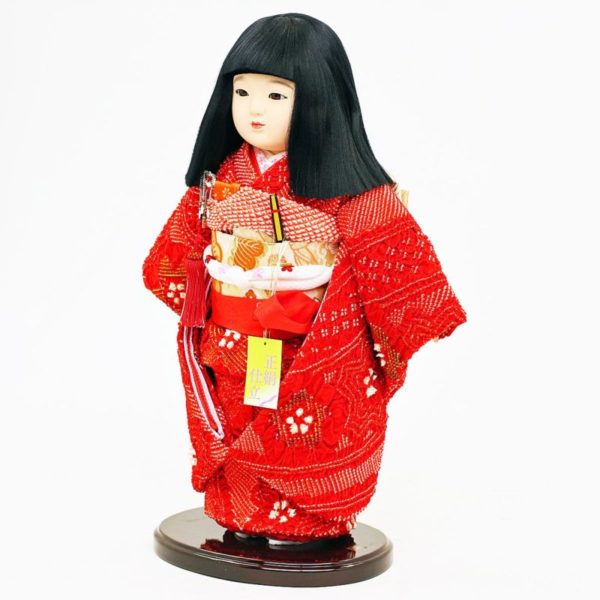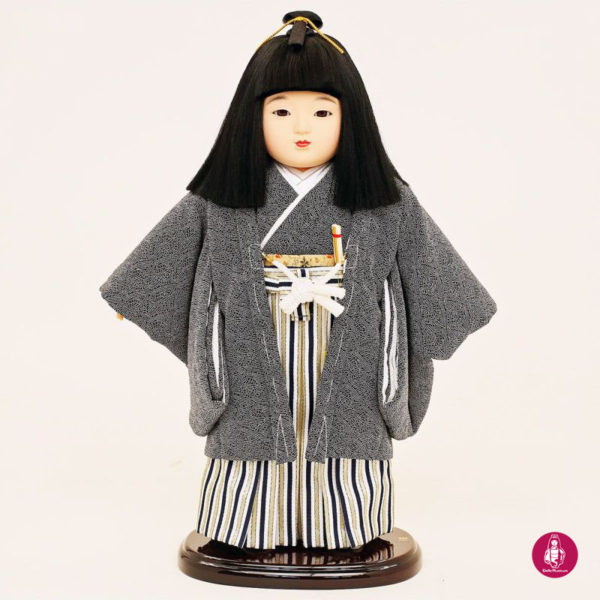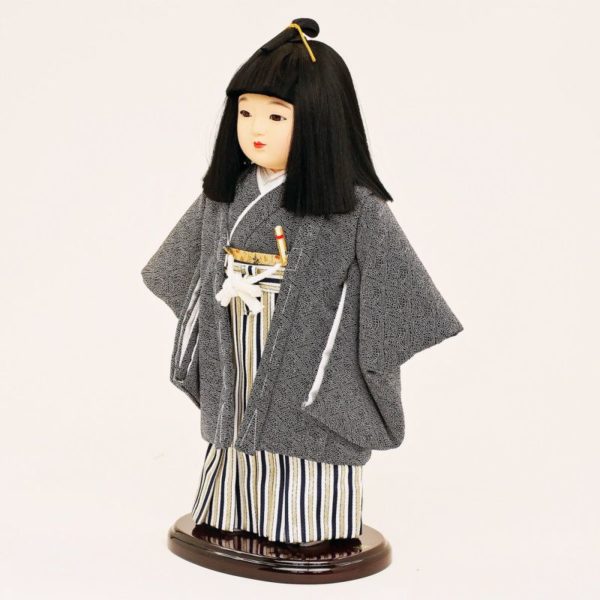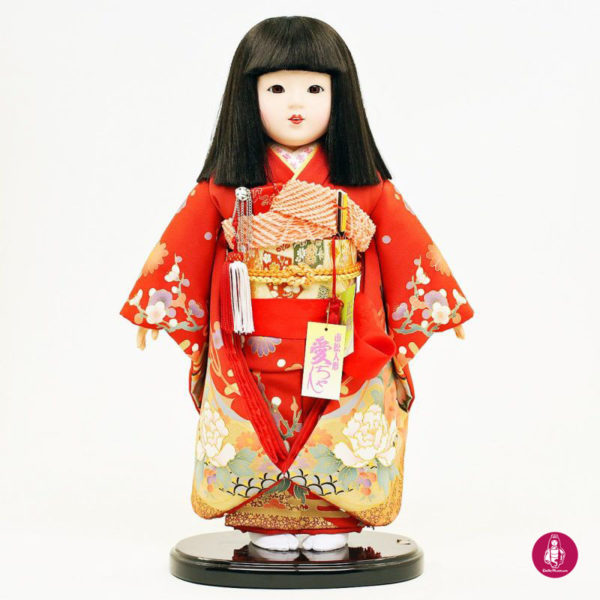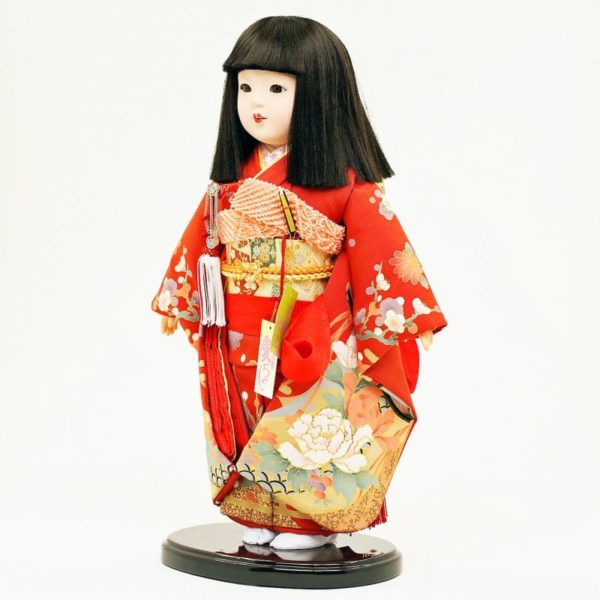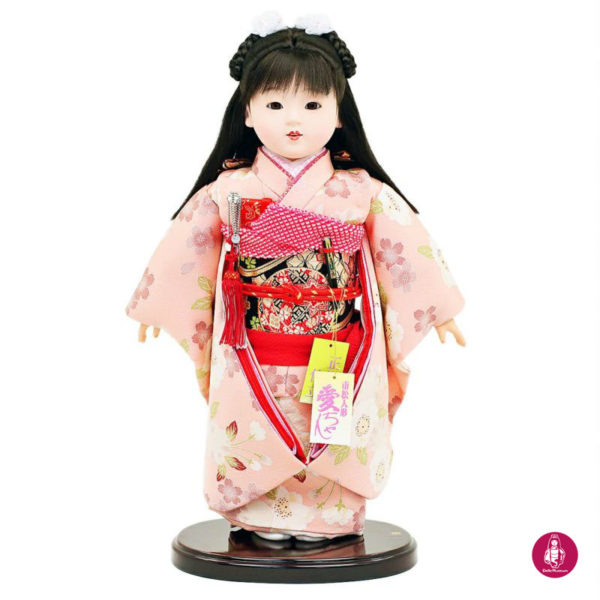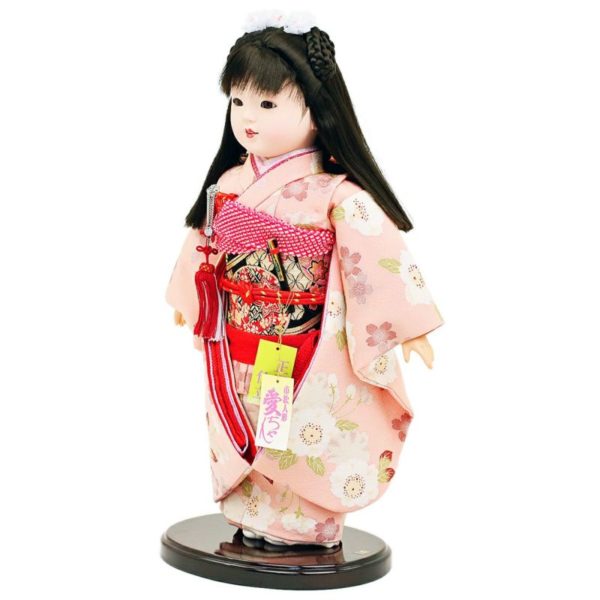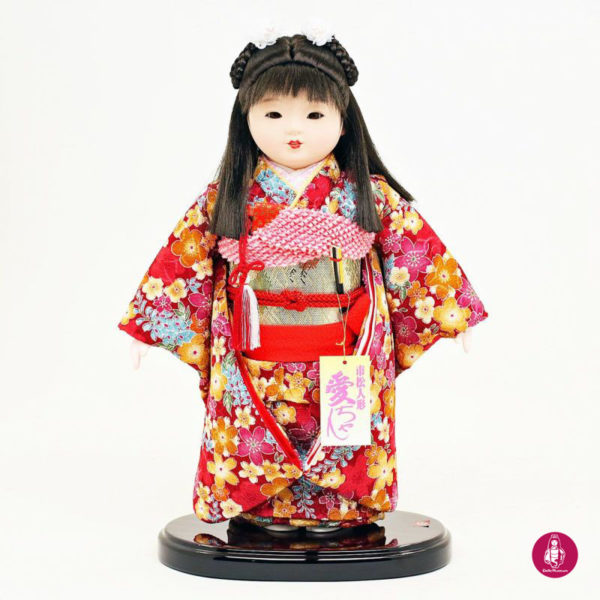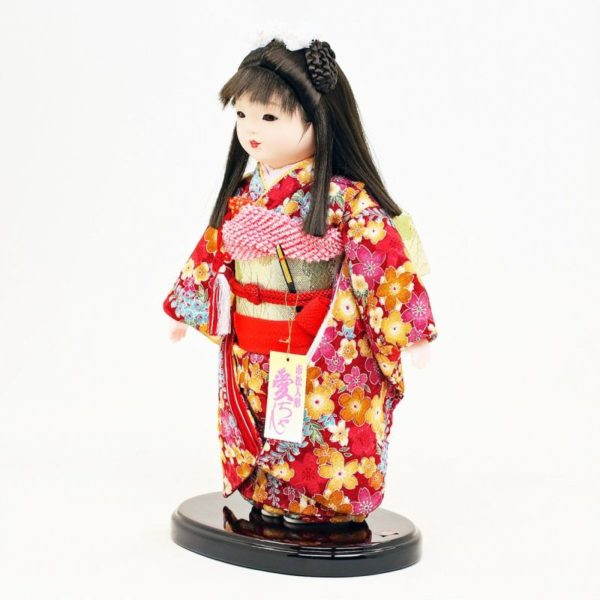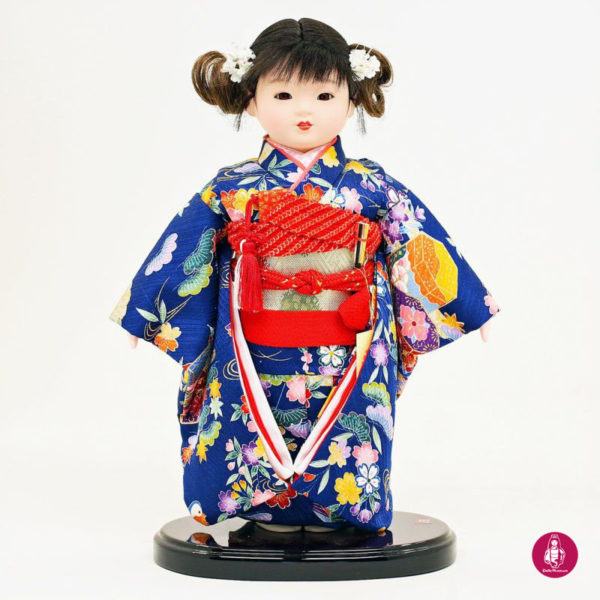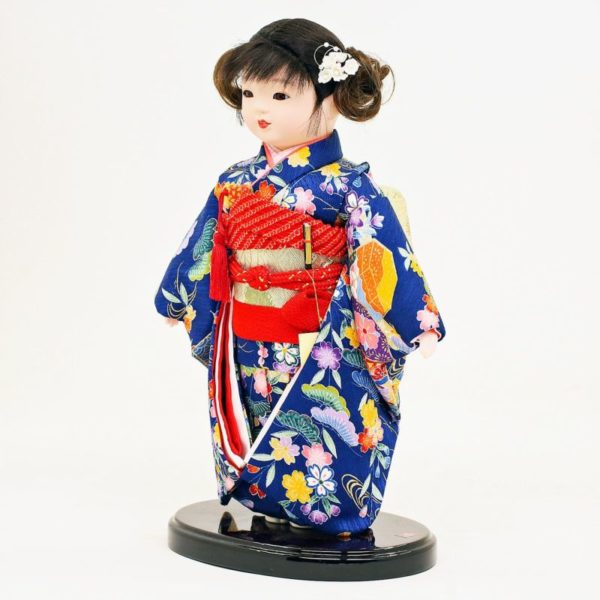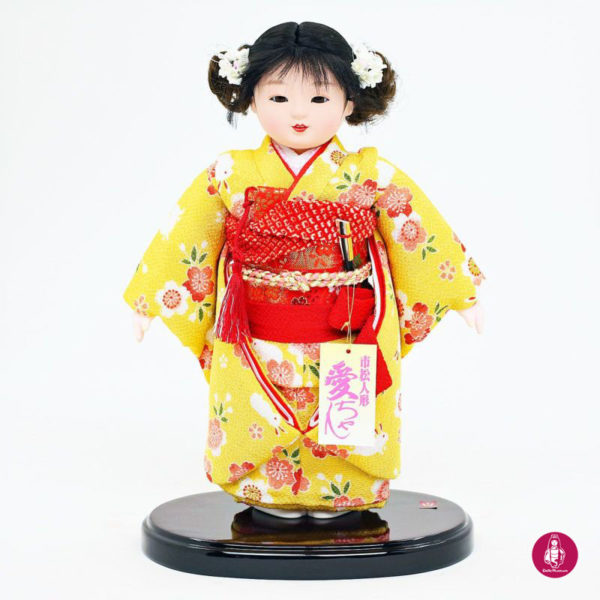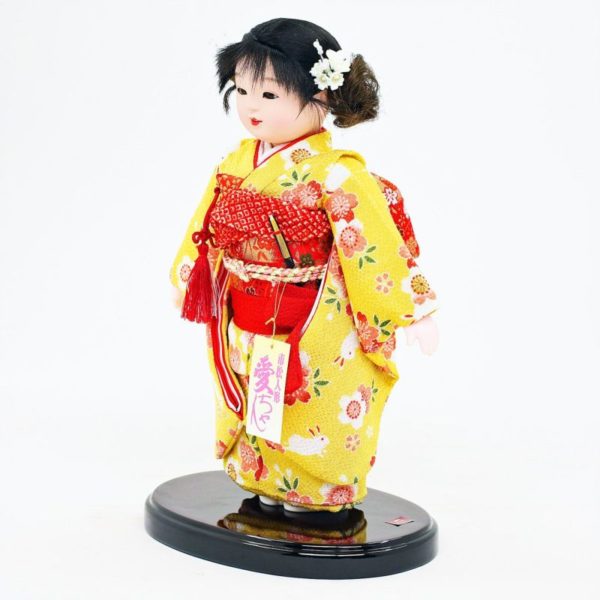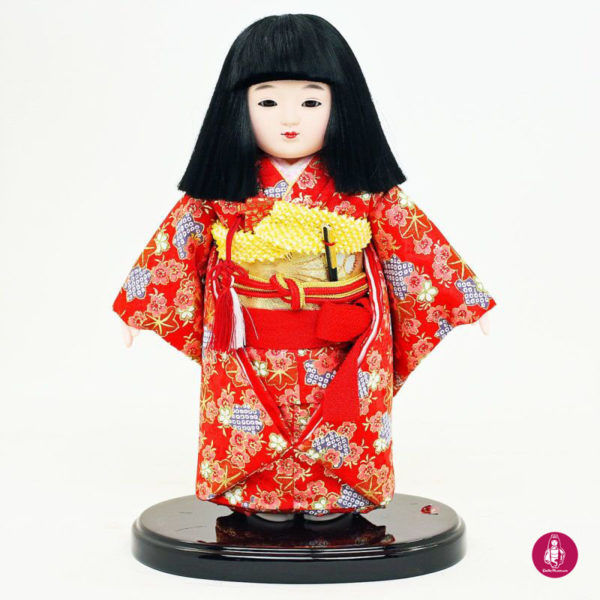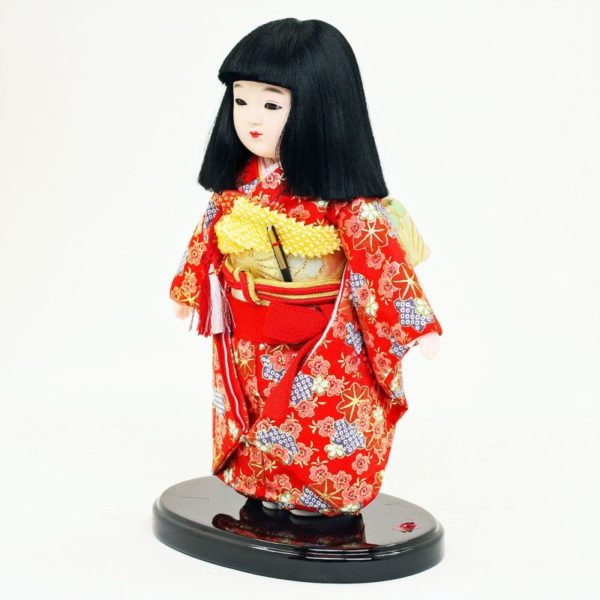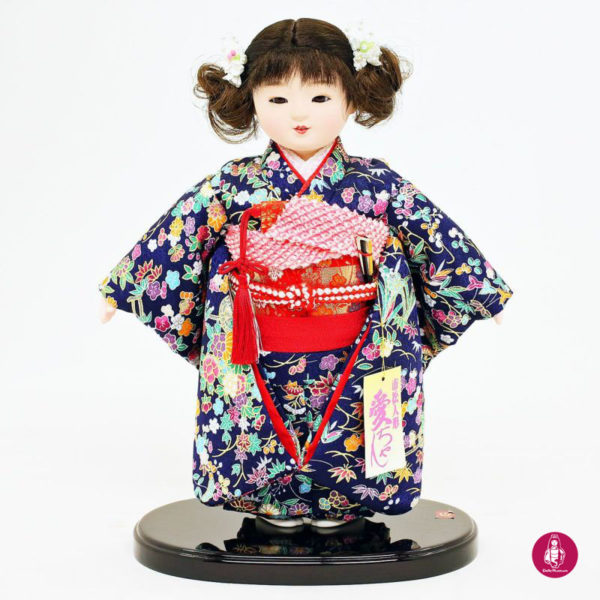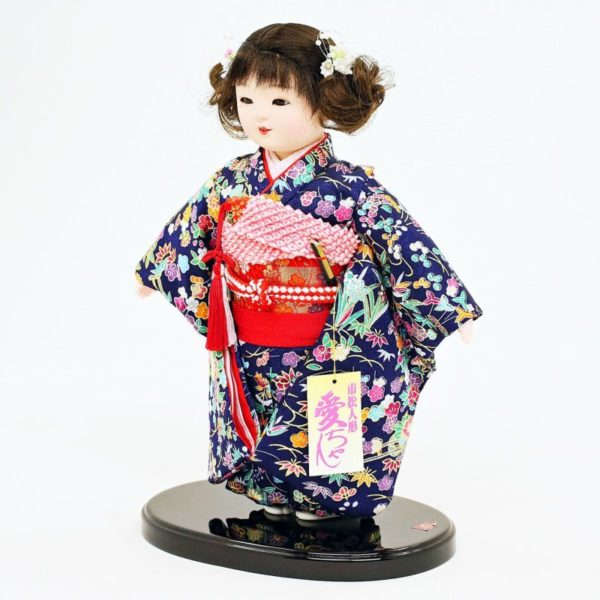Showing 21–37 of 37 results
-
¥105,000
The doll wears a Kimono (traditional Japanese costume) which is designed with Kiku (chrysanthemum) and Botan (peony) patterns. Obi (sash worn with a kimono) is dyed gold and designed with some flowers and plants patterns. Chrysanthemum pattern is one of the most popular designs among Japanese people. As its petals form radially, it’s linked to the Sun. It represents eternal youth, longevity or good health. Peony flower pattern represents happiness, wealth or perpetual youth and longevity. It has been expressed as one of the good meaning patterns, and believed as a sign of the rich harvest of the year. Sleeves and hem of this Kimono is decorated with Higaki pattern.…
-
¥92,000
The doll wears a Kimono (traditional Japanese costume) which is designed with Botan (peony), Kiku (chrysanthemum), Sakura (cherry blossom) and Fuji(Japanese wisteria) patterns. Peony flower pattern represents happiness, wealth or perpetual youth and longevity. It has been expressed as a kind of good meaning patterns, and believed as a sign of the rich harvest of the year. Chrysanthemum pattern is one of the most popular designs among Japanese people. As its petals form radially, it’s linked to the Sun. It represents eternal youth, longevity or good health. According to a tradition, cherry blossom is the symbol of rich harvest. Purple color of wisteria has been treated as a noble color…
-
¥82,000
The doll wears a Kimono (traditional Japanese costume) which is designed with Botan (peony), Kiku (chrysanthemum), Ume (Japanese apricot) and Matsu (pine tree) patterns. Peony flower pattern represents happiness, wealth or perpetual youth and longevity. It has been expressed as a kind of good meaning patterns, and believed as a sign of the rich harvest of the year. Chrysanthemum pattern is one of the most popular designs among Japanese people. As its petals form radially, it’s linked to the Sun. It represents eternal youth, longevity or good health. The flowering of Japanese apricot blossoms announces the arrival of spring. People appreciate its adorable petal shape, scent and characteristic branches. This…
-
¥82,000
The doll wears a Kimono (traditional Japanese costume) which is designed with Botan (peony), Kiku (chrysanthemum) and Sakura (cherry blossom) patterns. Peony flower pattern represents happiness, wealth or perpetual youth and longevity. It has been expressed as a kind of good meaning patterns, and believed as a sign of the rich harvest of the year. Chrysanthemum pattern is one of the most popular designs among Japanese people. As its petals form radially, it’s linked to the Sun. It represents eternal youth, longevity or good health. It’s said that cherry blossom is the symbol of rich harvest. It might be a reason that we do the cherry-blossom viewing picnic. Some crossing…
-
¥58,000
The doll wears a Kimono (traditional Japanese costume) which is designed with Sakura (cherry blossom), Botan (peony) and Kiku (chrysanthemum) and several other flowers and plants patterns. A tradition says that cherry blossom is the symbol of rich harvest. It’s believed that is why there is a traditional Japanese custom: cherry-blossom viewing picnic. Peony flower pattern represents happiness, wealth or perpetual youth and longevity. It has been expressed as a kind of good meaning patterns, and believed as a sign of the rich harvest of the year. Chrysanthemum pattern is one of the most popular designs among Japanese people. As its petals form radially, it’s linked to the Sun. It…
-
¥75,000
The doll wears a Kimono (traditional Japanese costume) which is designed with Sakura (cherry blossom) pattern. Large-flowered cherry blossoms decorate it. A tradition says that cherry blossom is the symbol of rich harvest. It’s believed that is why there is a traditional custom: cherry-blossom viewing picnic. Obi (sash worn with a Kimono) is also decorated with the same flower but different type one. The color gradation of sky blue and yellow is brilliantly expressed for this Kimono. For Japanese people, yellow is the color of light (sunshine) so that this color symbolizes spring. Yellow-color Kimono has meanings such as lively, brilliant and warm. It also represents youth, hope or change.…
-
¥75,000
The doll wears a Kimono (traditional Japanese costume) which is designed with Sakura (cherry blossom) and Kiku (chrysanthemum) patterns. Large-flowered cherry blossoms decorate it. A tradition says that cherry blossom is the symbol of rich harvest. It’s believed that is why there is a traditional custom: cherry-blossom viewing picnic. Peony flower pattern represents happiness, wealth or perpetual youth and longevity. It has been expressed as one of the good meaning patterns, and believed as a sign of the rich harvest of the year. Obi (sash worn with a Kimono) is dyed orange and shows the gorgeous combination of variety types of patterns. This Kimono is colored with sky blue mainly.…
-
¥75,000
The doll wears a Kimono (traditional Japanese costume) which is designed with Botan (peony), Kiku (chrysanthemum) and Ume (Japanese apricot) patterns. Peony flower pattern represents happiness, wealth or perpetual youth and longevity. It has been expressed as one of the good meaning patterns, and believed as a sign of the rich harvest of the year. Chrysanthemum is one of the most popular designs among Japanese people. As its petals form radially, it’s linked to the Sun. This flower pattern represents the eternal youth, the longevity or good health. The flowering of Japanese apricot blossoms announces the arrival of spring. People appreciate its adorable petal shape, scent and characteristic branches. Japanese…
-
¥160,000
The doll wears a tie-dyed pure silk Kimono (traditional Japanese costume) which is designed with Ume (Japanese apricot) and several geometric patterns. The flowering of Japanese apricot blossoms announces the arrival of spring. People appreciate its adorable petal shape, scent and characteristic branches. Japanese apricot blossom pattern represents patience, vitality or prosperity of future generations. Obi (sash worn with a Kimono) is designed with Ume, Kiku (chrysanthemum) and Kikkou-Mon patterns. Chrysanthemum is one of the most popular designs among Japanese people. As its petals form radially, it’s linked to the Sun. This flower pattern represents the eternal youth, the longevity or good health. Kikkou pattern describes the shell of turtle.…
-
¥120,000
The boy doll wears Haori-Hakama. It’s a kind of Kimono (traditional Japanese costume), the combination of Kimono for men and Hakama (long pleated Japanese trousers) wearing Haori (Japanese half-length coat) It’s been used as a formal wear for men. The entire cloth is desiged with the geometric pattern. Shima-Moyou (stripe pattern) is used for this Hakama. (ICHIMATSU Doll – Standing – Size 10 #013) SIZE Vertical Horizontal Depth 54.0 cm 21.3 inches 39.5 cm 15.6 inches 29.0 cm 11.4 inches This Ichimatsu doll is possibly out of stock. If you want to confirm the stock of this item, please feel free to contact us.
-
¥75,000
The doll wears a Kimono (traditional Japanese costume) which is designed with Botan (peony), Ume (Japanese apricot) and Kiku (chrysanthemum) patterns. Egasumi-Mon is designed back of flower patterns. Peony flower pattern represents happiness, wealth or perpetual youth and longevity. It has been expressed as one of the good meaning patterns, and believed as a sign of the rich harvest of the year. The flowering of Japanese apricot blossoms announces the arrival of spring. People appreciate its adorable petal shape, scent and characteristic branches. Japanese apricot blossom pattern represents patience, vitality or prosperity of future generations. Chrysanthemum is one of the most popular designs among Japanese people. As its petals form…
-
¥70,000
The doll wears a Kimono (traditional Japanese costume) which is designed with different types of Sakura (cherry blosom) patterns. This Kimono is colored with pink so that it makes cute and mild looks. According to a tradition, cherry blossom is the symbol of rich harvest. It’s said that it might be the reason why cherry-blossom viewing picnic was started in Japan. Obi (sash worn with a Kimono) is dyed black and designed with Shippou and Temari patterns. Shippou pattern is a kind of geometric pattern in which a quarter circle is placed on one circle. It represents amiable relationship. Temari is a ball that children play. It’s one of the…
-
¥39,000
The doll wears a Kimono (traditional Japanese costume) which is designed with different colors of Sakura (cherry blosom), Ume (Japanese apricot) and Fuji (Japanese wisteria) patterns. According to a tradition, cherry blossom is the symbol of rich harvest. It’s said that it might be the reason why cherry-blossom viewing picnic was started in Japan. The flowering of Japanese apricot blossoms announces the arrival of spring. People appreciate its adorable petal shape, scent and characteristic branches. This flower pattern represents patience, vitality or prosperity of future generations. As Japanese wisteria has a high fertility rate, it’s said that this flower pattern represents longevity or prosperity of future generations. This Kimono is…
-
¥39,000
The doll wears a Kimono (traditional Japanese costume) which is designed with different colors of Sakura (cherry blosom), Matsu (pine tree), Momiji (maple) and Oshidori (mandarin) patterns. According to a tradition, cherry blossom is the symbol of rich harvest. It’s said that it might be the reason why cherry-blossom viewing picnic was started in Japan. Pine tree keeps its green color all the year around so that it’s treated as the holy plant. Maple changes its leaves color from green to yellow, orange or red. It’s one of the charms of fall and it symbolizes this season. The combination of this plant pattern and running water or waves patterns are…
-
¥34,000
The doll wears a Kimono (traditional Japanese costume) which is designed with Sakura (cherry blossom) and Usagi (rabbit) patterns. A tradition says that cherry blossom is the symbol of rich harvest. It’s said that is why cherry-blossom viewing picnic was started in Japan. This flower pattern is one of the most popular motifs for lady’s Kimono. Running or jumping rabbits are designed for this Kimono. As rabbits hop along, its pattern represents progress. It symbolizes also prosperity of future generations because rabbits have many children. Like cherry blossom pattern, rabbit pattern is often used for lady’s Kimono but especially for girls one. Same as Kimono, Obi (sash worn with a…
-
¥34,000
The doll wears a Kimono (traditional Japanese costume) which is designed with Sakura (cherry blossom) and Momiji (Maple) patterns. According to a tradition, cherry blossom is the symbol of rich harvest. It’s said that is why cherry-blossom viewing picnic was started in Japan. This flower pattern is one of the most popular motifs for lady’s Kimono. Maple changes its color from green to yellow, orange or red. It’s one of the charms of fall so that its pattern symbolizes this season. The combination of maple pattern and waves of river or sea patterns are often found for Kimono or other types of dyeing and weaving. Kanoko-Mon is used to describe…
-
¥34,000
The doll wears a Kimono (traditional Japanese costume) which is designed with different colors of Botan (peony), Kiku (chrysanthemum), Momiji (maple), Suisha (waterwheel) and Sho-Chiku-Bai patterns. Peony flower pattern represents happiness, wealth or perpetual youth and longevity. It has been expressed as one of the good meaning patterns, and believed as a sign of the rich harvest of the year. Waterwheel pattern can be found at the hem of her backside, close to peony flowers. Chrysanthemum flower is one of the most popular designs among Japanese people. As its petals form radially, it’s linked to the Sun. This flower represents the eternal youth, the longevity or good health. Maple changes…





